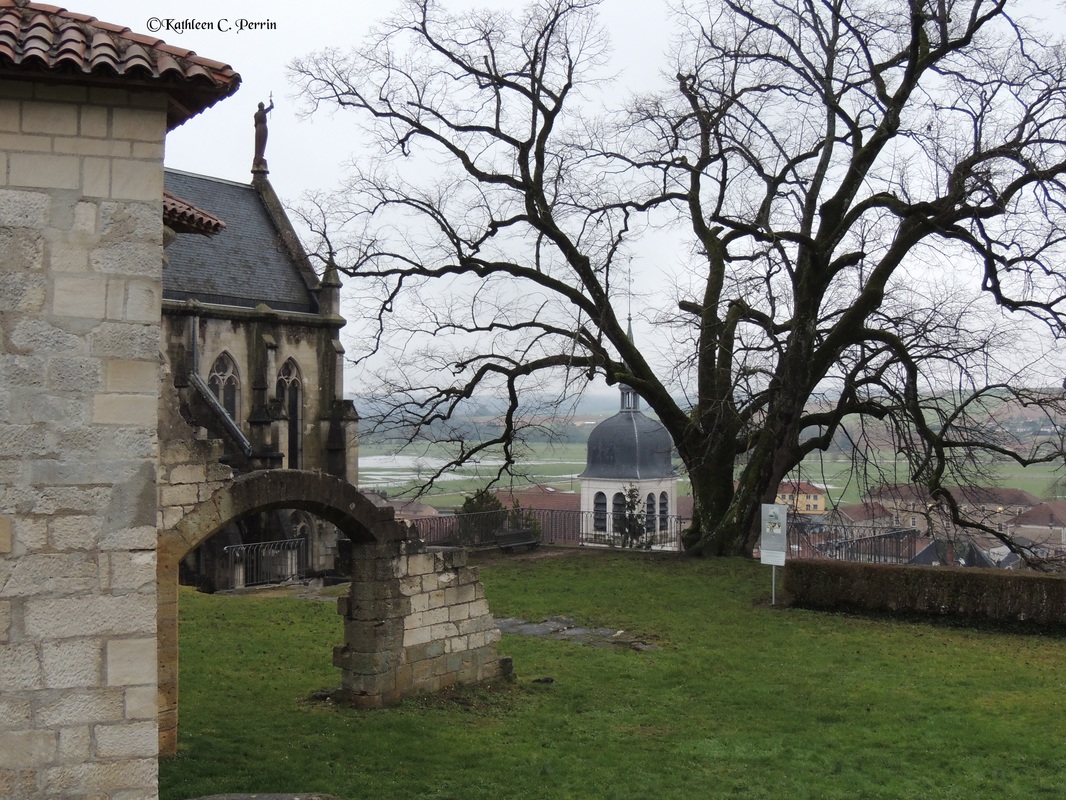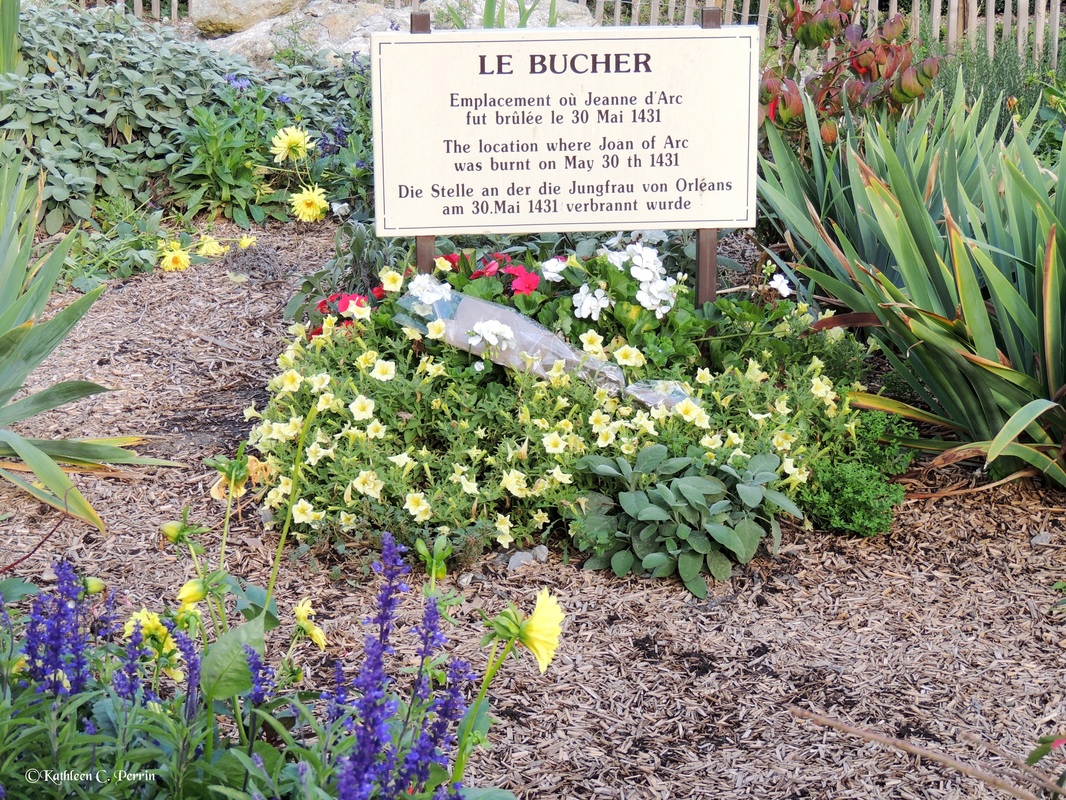
While going through the process of writing The Sword of the Maiden, the second novel in The Watchmen Saga, I was preoccupied by all things “Joan of Arc.” Actually, my preoccupation with Joan started long before I wrote my first novel in the series, The Keys of the Watchmen. In fact, the entire unwritten premise of the first novel was to set up Katelyn Michaels as the one mortal who could fully understand and logically assist Joan in her mission. No, my preoccupation with Joan is not just a passing fancy. I have been interested in her remarkable story for years, even decades.
My challenge in writing this novel was that so much has been said about Joan and so much has already been written about her. She is probably the most iconic figure ever to have come out of France. Consequently, I knew that trying to tell her story from a fictional platform was risky business. How could I bring anything of value to her story? How could I add one iota of understanding to what actually motivated her? How could I do her improbable narrative justice? I finally came to the conclusion that all I could do was try to give my readers a personal experience with her, and to do that, I wanted to be as accurate as possible about the places she visited and the conditions in which she lived.
Because my Breton husband and I are blessed to own a small cottage in Brittany, I have the opportunity of spending a lot of time in France. Consequently, we visited the important sites in Joan of Arc’s story on many occasions and in every season of the year. I paced off distances and even whipped out my handy-dandy tape measure to assess the width of battlements and ramparts. I took hundreds of photos from every possible vantage point. Incidentally, click on "Joan of Arc Sites" to see those photos and for my recommendations of the actual places to visit.
My challenge in writing this novel was that so much has been said about Joan and so much has already been written about her. She is probably the most iconic figure ever to have come out of France. Consequently, I knew that trying to tell her story from a fictional platform was risky business. How could I bring anything of value to her story? How could I add one iota of understanding to what actually motivated her? How could I do her improbable narrative justice? I finally came to the conclusion that all I could do was try to give my readers a personal experience with her, and to do that, I wanted to be as accurate as possible about the places she visited and the conditions in which she lived.
Because my Breton husband and I are blessed to own a small cottage in Brittany, I have the opportunity of spending a lot of time in France. Consequently, we visited the important sites in Joan of Arc’s story on many occasions and in every season of the year. I paced off distances and even whipped out my handy-dandy tape measure to assess the width of battlements and ramparts. I took hundreds of photos from every possible vantage point. Incidentally, click on "Joan of Arc Sites" to see those photos and for my recommendations of the actual places to visit.
I especially wanted to know what conditions would have been like for Joan to travel on horseback from Lorraine in Eastern France to the Loire Valley during the winter months, so I traipsed across fields from Domrémy to Chinon, saturated from the near-constant drizzle that hangs over France during January and February. Even in the seemingly firm fields covered with green vegetation, my feet sank several inches into mud and muck. Unlike Joan, I had a warm car in which to take refuge, a hotel room in which to shower, eat and sleep, several changes of clothing and shoes, and I didn’t have English marauders out to kill me! I could barely fathom how miserable conditions must have been during that monumental voyage she undertook with her little band of merry men, but I got a small taste of it. I did all of this so that I could more accurately describe where Joan grew up, the places she visited, and the conditions present during the initial part of her mission to save France. I wanted to be as precise as possible so that you, my readers, could perhaps feel a bit of what she felt.
I returned in February from my latest trip to France where my husband and I revisited some of the sites I write about in The Sword of the Maiden. However, on this occasion, with all of the hectic moments of getting the book finished and published behind me, I was able to just contemplate. I hardly took any photographs. I certainly didn’t take any measurements. No longer concerned about how I was going to describe the Jehannic sites in words, I finally took the time to ponder more deeply about the remarkable maiden who walked in these places.
While standing on the very spot in Rouen where Joan of Arc was burned at the stake in 1431, I felt overwhelmed by emotion for the young woman I had tried to come to know personally. I was overcome by the reality of how she must have suffered, and of how she must have felt abandoned and betrayed by her compatriots, her voices, and even by God. I hoped that at that moment when the flames engulfed her, she knew that her sacrifices served a noble purpose and that her martyrdom mattered. I reflected on the difference she made in her very short life, not only for the Dauphin Charles and her beloved France, but for generations to come. This 19-year-old child-woman impacted the entire Western world. As I expressed in the novel, I firmly believe that her actions were critical for France to finally regain its sovereignty, and that a strong and independent France was key in assisting and motivating American Revolutionaries to obtain America’s independence from England. Obviously, many, many other factors were critical in these developments, but what would have happened if Joan had failed in her mission? How might the course of history have been entirely different? I felt honored to have had the opportunity, in some small way, to share the story of Jehanne la Pucelle with others.
The feelings I had at that moment reinforced the conviction I have that each of us can make a difference in some way, even if it’s just in the life of a single individual. To that person, it could mean everything. I’ve learned from Joan’s story that to make a difference, we have to be driven by deep conviction and complete unselfishness. We cannot be focused on our own self-centered desires. Very few of us will ever impact the world like Joan of Arc did, but every one of us can make our homes, neighborhoods, communities, cities, states or countries better places by focusing on others. I hope that learning about Joan’s courage and conviction will motivate my readers to find ways to make a difference. This is how we can honor her legacy.





 RSS Feed
RSS Feed